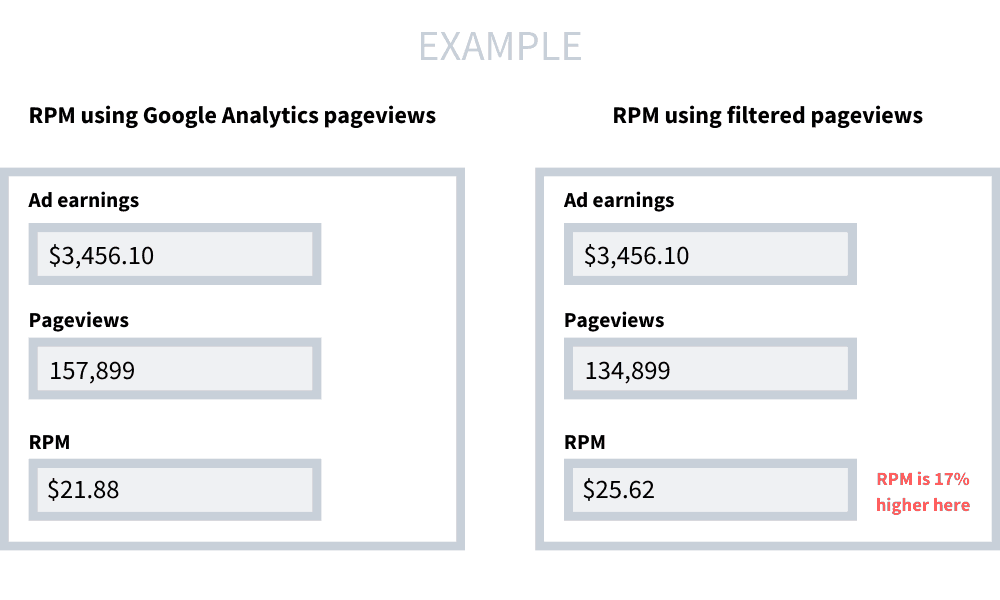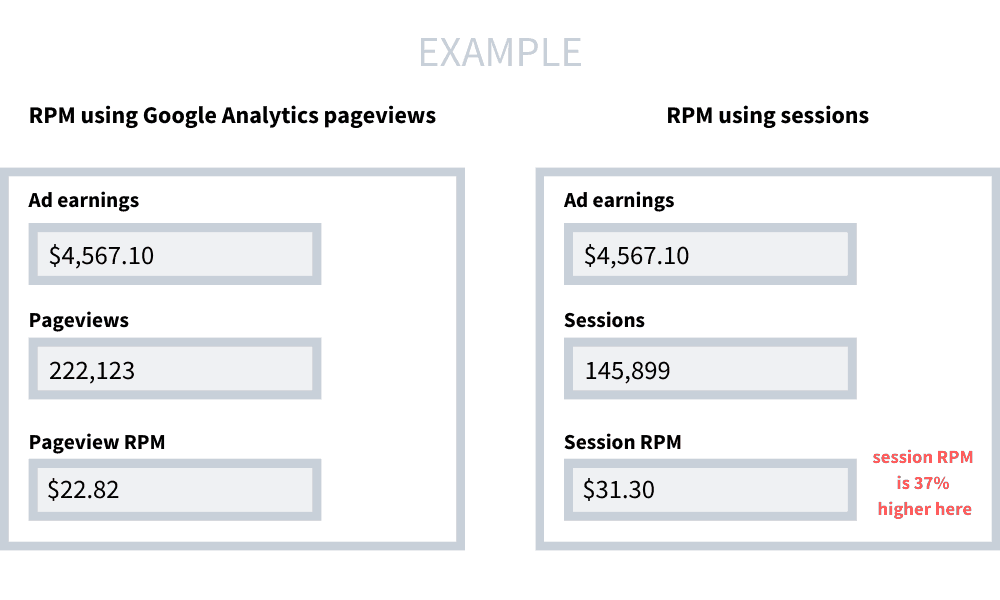What’s the deal with RPM? - AdsHeavy Native Ads
RPM. Three letters that are full of promise and excitement. And often a little confusion and a few misconceptions:
RPM is how I get paid for my ads. A higher RPM number is always more money in my pocket. Every ad provider calculates RPM the same way.
In this post, I’m going to unpack what RPM truly is, how it can be masked, manipulated, and misinterpreted, and how we’re striving for transparency. So you can trust (and verify) you’re truly receiving the highest RPMs in the industry here at AdsHeavy!
What is RPM?
RPM stands for “revenue per mille.”
It’s a way of taking the total amount of money your ads are earning and using a simple calculation to understand it better. Traditionally in the ad industry, RPM is defined as “ad earnings per 1,000 pageviews.”
For any given time period, take your total ad earnings, divide that number by your total pageviews for that same time period, then multiply by 1,000.
RPM = Earnings ÷ Pageviews × 1,000
RPM is not the way you get paid for your ads, but it helps you better understand how you are earning
It’s a common misconception that the RPM calculation works the opposite way. That RPM is a flat rate at which your ads earn, determining how much money you make overall.
But advertisers don’t pay publishers based on RPM. For every pageview and every ad placement on your site, an auction takes place where advertisers decide how valuable each visitor is and how much they want to pay to show their ad to that visitor. Collectively, these winning bids for each ad impression add up to your total ad revenue.
This total ad revenue number isn’t super helpful. It’s difficult to figure out much about how your ads are performing by just looking at this large number, so RPM helps you better interpret the value of the traffic that visits your site by looking at it in smaller portions.
RPM tells you, “For every 1,000 pageviews, you averaged this much ad revenue.”
This is useful so you can gauge whether you’re averaging more or less for each 1,000 pageview chunk of traffic. It gives you a reliable, repeatable “quick-take” on how your ads are earning.
Does everyone calculate RPM the same way?
In order for RPM to be a trustworthy method for gauging ad performance, everyone should measure it the same way, right?
Unfortunately, that’s not the case. Not every ad provider calculates RPM the same way, and some approaches result in confusing or skewed reports of RPM.
RPM calculated using all Google Analytics pageviews vs. RPM calculated using filtered pageviews
Traditionally, RPM is calculated using pageviews, as reported by Google Analytics.
Google Analytics is the industry standard for measuring website traffic for a reason. It’s crucial to have an agreed-upon source for numbers, that defines “one pageview” the same way every single time. This means that if you use Google Analytics for your site, you can look at pageviews for today, yesterday, or one year ago, and know that a single pageview means the same thing across this entire time period.
We use Google Analytics pageviews to calculate RPM here at AdsHeavy. It’s the most consistent, recognized method for measuring your traffic and as a result, helping you understand your ad performance for the traffic you receive.
However, some ad providers don’t use Google Analytics to measure traffic to calculate RPM. They use their own, proprietary methods to measure the traffic you receive. This means that they define what “one pageview” means. It’s decided in their system, so it’s not reproducible outside of their products, or consistent across the industry.
So what happens if the definition of “one pageview” isn’t consistent?
Often, other ad providers filter out pageviews based on their own criteria: perhaps ads didn’t fill or were blocked by an ad blocker, or you turned ads off on a specific page. If you remove certain pageviews from the RPM equation, it LOOKS higher as a result, even though overall ad earnings don’t increase.

It’s easy to make RPM look higher by simply removing some pageviews from the equation. But an RPM using filtered pageviews doesn’t tell you the full story of your ad performance. It can be one tool in your arsenal to understand ad performance, but it can easily hide performance issues like ad impressions that don’t fill or pages where ads don’t load.
RPM based on pageviews vs. RPM based on sessions
Remember, the most-used standard for the RPM calculation uses pageviews as measured by Google Analytics. But some ad providers report RPM based on sessions.
What’s the difference between a pageview and a session?
Google Analytics defines a pageview as “an instance of a page being loaded (or reloaded) in a browser.” And they define a session as “the period of time a user is active on your site or app.”
Each session can encompass multiple pageviews. For example, someone visits your site to read one post, then a related post catches their eye, so they click over to that page. Finally, they visit your “About Me” page. The time they spent browsing your site is called a “session,” and they visited three pages in this single session.
Your site will always have more pageviews than sessions. As a result, RPM calculated using sessions will always be higher than RPM calculated using pageviews, even though overall earnings are exactly the same.

Both calculations use the same overall ad earnings, but “session RPM” returns a higher number. It can get pretty confusing to refer to BOTH of these calculations as “RPM”, so you’ll see “session RPM” in the AdsHeavy dashboard listed as “RPS”.
Why does AdsHeavy focus on RPM using Google Analytics pageviews?
We focus on RPM calculated using Google Analytics pageviews because it gives you more information about the value of every page visited on your site so you can have the best picture of your ad performance. It lets you perform a true apples-to-apples comparison, using industry-standard metrics, without complicating comparisons by using proprietary calculations.
We’re excited to continue to deliver the highest RPMs to the highest-quality publishers and serve your business well!
Whether you’re a publisher or advertiser, there’s something for everyone with AdsHeavy.


